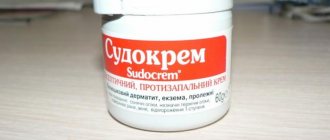Lymph node hyperplasia is a pathological symptom characterized by an increase in lymph node volume. At the same time, they begin to be visualized under the skin.
Proliferation of nodes occurs due to their increased activity in the production of lymphocytes in order to neutralize malevolent agents. Such as pathogenic microorganisms (bacteria, fungi and others) that cause tissue inflammation, tumor cells or molecules of toxic substances. Thus, hyperplastic nodes may be a symptom of diseases of various etiologies.
Lymph nodes
First, let's take a brief overview of these small but very important organs. The lymph node is a natural filter that helps get rid of all kinds of pathogenic agents that have entered the body.
Its structure is quite complex. In general terms, a lymph node is a small (up to 50 mm maximum) round, bean-shaped or oval-shaped sac, to which lymph vessels (several incoming and one outgoing) are suitable. The outside of the “bag” is covered with a membrane consisting of connective tissue. Inside it is filled with the so-called stroma, made up of reticular fibers. A large number of lymphocytes of various types are concentrated in the space between them.
Lymph, slowly seeping through the reticular fibers, as if through a sieve, is cleared of all sorts of pathogenic agents that it has “collected” in the body (bacteria, viruses, protozoa, and so on). If a person has any disease, too many harmful elements enter the lymph. The lymph nodes can no longer cope with their task and become inflamed. This symptom always indicates the presence of some pathogenic process in the body.
While examining the patient, the doctor discovers that his lymph nodes are enlarged. In the abdominal cavity of a child and an adult, there are about 600 of them. They are located not one by one, but in groups, vaguely similar to a bunch of grapes. Lymph nodes are concentrated in the peritoneum where blood and lymph vessels pass - near the stomach, liver, spleen, mesentery, intestines.
Subspecies
Mesenteric lymph nodes are a large group of vessels, consisting of two categories:
- upper;
- lower ones.
The upper lymph nodes have the largest representation of visceral ligaments, up to 400 pieces. The location of dislocation in the human body is near the small intestine, in the middle of the mesentery. They are located deep, palpation is inaccessible. Painlessness is the norm for them. Filters lymph from most of the intestines.
There are fewer representatives of the lower vessels, the number varies from 10 to 60 pieces. Located near the sigmoid colon of the body. Palpation is impossible due to the deep location. The protein suspension in the lower intestine is collected and filtered.
Both representatives of the class of mesenteric nodes perform the function of an outpost of the human body and respond to the appearance of foreign microorganisms in the human peritoneum. Therefore, if you feel discomfort in the abdominal cavity and the blood vessels are enlarged, you should consult a doctor.
Causes of inflammation
Based on the above, you can easily understand why the lymph nodes in the abdominal cavity of a child are enlarged. In general, this condition is called lymphadenopathy, and inflammation of the lymph nodes specifically in the mesentery is called mesadenitis. It is caused by the following reasons:
- Any bacterial infection (streptococci, staphylococci, salmonella, tuberculosis, E. coli).
- Any viral infection (enterovirus, herpes).
- Worm infestation.
- Fungal infection.
- In rare cases, toxic poisoning.
Pathogenic elements enter the lymph nodes with blood, lymph, and also through the lumen of the tract (worms).
Sometimes the infection seeps into the tissue of the lymph nodes directly from the intestines.
What diseases cause mesadenitis?
Most often, a child's lymph nodes in the abdominal cavity are enlarged due to the development of diseases in the organs near which they are located. Among them:
- Helminthiases.
- Brucellosis.
- Hepatitis.
- Trichinosis.
- Ascariasis.
- Echinococcosis.
- Salmonellosis.
- Mononucleosis.
But often the lymph nodes in the child’s abdominal cavity are enlarged due to infectious diseases not related to the gastrointestinal tract. Among them:
- Flu.
- ARVI.
- Tuberculosis.
- Pneumonia.
- Herpes.
- Lupus erythematosus.
The following can also cause enlargement of lymph nodes in the peritoneum:
- AIDS.
- Syphilis.
- Malignant formations (metastasis in the gastrointestinal tract).
These ailments are mainly observed in adults, but they also occur in children.
Inflammation of the mesenteric lymph nodes: symptoms and treatment methods
The mesenteric lymph nodes, which are localized in the groin area, can become inflamed when exposed to certain external or internal factors, which will result in the development of a disease such as lymphadenopathy of the mesenteric lymph nodes. Very often, this disease is confused with acute appendicitis, because the symptoms of these pathologies are quite similar.
Why mesenteric lymphadenopathy may occur
The mesenteric lymph nodes of the intestine can become inflamed only due to the entry of certain bacteria and viruses into the body, namely, into these nodes. They enter through the general blood flow or lymph flow from the primary infectious focus or from the intestine itself, where the pathogenic microorganism is localized.
The primary focus of infection may be concentrated in the intestines or in another area, for example, in the appendix or upper respiratory tract.
The following infectious microorganisms and primary diseases can cause mesenteric lymphadenitis:
- enterovirus, which can also cause watery diarrhea, pain in the abdominal area, increased gas formation;
- The Epstein-Barr virus causes infectious and oncological pathologies, for example, progressive malignant tumors;
- streptococcus and staphylococcus are those harmful microorganisms that are localized in the human body, but do not manifest themselves pathologically until the natural level of the immune system decreases;
- Salmonella is a pathogenic microorganism that, when exposed, causes the development of a disease such as salmonellosis (damage to the gastrointestinal tract and nearby lymph nodes);
- tuberculous microbacteria - the source of tuberculosis - a disease that can cause damage to the lungs, gastrointestinal tract, and nearby lymph nodes);
- the development of primary infectious mononucleosis - a disease that can cause not only damage to the mesenteric lymph nodes, but also such as cervical, peripheral, as well as organs - the liver, spleen;
- the development of primary Burkitt lymphoma - a malignant tumor that can form not only in the mesenteric lymph node, but also in the submandibular one.
What signs accompany the disease
Mesenteric lymphadenitis is accompanied by the following symptoms:
- Abdominal pain syndrome. It is impossible to pinpoint exactly where it hurts. The nature of the pain syndrome can be dull and encircling, of strong intensity, which prevents a person from leading a normal lifestyle. The pain subsides after changing the position of the body.
- Impaired functioning of the digestive tract. These may include the following symptoms: dry mouth, gagging, weight loss, diarrhea and nausea.
- The general temperature may increase.
- Jumps in blood pressure are characterized by alternating sharp rises and falls.
- Increased heart and respiratory rates.
- Over time, the pathology develops, the pain syndrome may disappear, but if purulent cavities have formed at this time, symptoms of acute peritonitis and intestinal obstruction appear.
Mesenteric lymphadenitis in children occurs with more severe symptoms, which are similar to the manifestations of appendicitis.
If the mesenteric lymph nodes are enlarged in a child aged 1-5 years, symptoms such as an increase in general temperature, apathy towards other people, and bowel dysfunction (constipation or diarrhea) may occur.
Mesenteric lymphadenopathy in children over 5 years of age is accompanied by the same symptoms as in an adult.
Classification of mesenteric lymphadenitis
All symptoms and signs of such a disease can be divided into 2 forms of its development:
- The acute form of the pathology is characterized by the occurrence of cramping pain, increased general temperature, increased heart rate, nausea and vomiting.
- The chronic form of the pathology, mesenteric lymphadenopathy, is characterized by the occurrence of mild discomfort in the abdominal region, which is present on an ongoing basis. Increased pain is observed when performing physical exercises or when changing the position of the body.
Also, inflammation of the mesenteric lymph nodes can be divided into 2 types: specific and nonspecific. Specific lymphadenopathy is a consequence of exposure to tuberculosis microbacteria on the body. Nonspecific mesenteric lymphadenitis occurs against the background of exposure to other bacteria and viruses and is accompanied by the following symptoms:
- sudden pain arising in the right iliac region;
- increase in general temperature;
- nausea and vomiting;
- disruption of the functioning of the gastrointestinal tract (constipation, diarrhea, hiccups);
- increased heart rate;
- catarrhal manifestations in the nasopharynx.
If there is specific (tuberculous) lymphadenopathy of the mesenteric lymph nodes, the symptoms will be somewhat different:
- wandering periodic pain in the abdominal area of lesser intensity;
- slight increase in body temperature;
- malaise, lack of interest in food;
- weight loss
Conservative treatment
It is advisable to treat enlarged mesenteric lymph nodes in adults and children only in a hospital and not at home.
This can be explained by the fact that such a disease requires constant monitoring of its course and the state of human health in general.
Lymphadenopathy of the mesenteric lymph nodes in children and adults is a disease, the treatment of which consists of eliminating the provoking cause, as well as reducing the symptoms that arise. The doctor prescribes the following therapy:
- Taking antibiotics, which are selected individually. Before prescribing antibiotics, special tests are carried out to help determine the percentage of sensitivity of the pathogenic microorganism to such a drug.
- Antispasmodics and other painkillers are necessary to eliminate pain;
- Detoxification treatment, namely, the intravenous administration of special drugs that can help eliminate signs of intoxication in the patient’s body.
- Anti-tuberculosis therapy is necessary when the disease is caused by tuberculosis microbacteria. Therapy is carried out in a specialized hospital.
- Physiotherapeutic procedures are one of the main methods of treating a disease such as abdominal lymphadenopathy in children and adults. Ultra-high frequency waves or UHF are actively used.
If conservative therapy does not bring the desired recovery, laparotomy is prescribed - an operation during which the abdominal wall is cut and the affected node is removed. If pus is detected, it is cleaned out. The node that was removed during surgery is examined in the laboratory. In the postoperative period, it is necessary to take antibiotics and undergo physical therapy sessions.
Is it possible to prevent the disease?
You can prevent the development of such a disease by simply following some simple recommendations:
- Timely detection and complete cure of infectious pathologies.
- Monitoring the condition of the oral cavity.
- If a rash, boils or other skin changes occur, you should consult a specialist.
Only timely diagnosis will help to get rid of the development of negative consequences in the future, on which the prognosis of the disease depends.
Source: https://prolimfouzel.ru/zabolevaniya/vospalenie-bryzheechnyh-limfouzlov.html
Classifications
A disease in which the lymph nodes in the child’s abdomen are enlarged can occur suddenly or last for years. Depending on the nature of the flow, the following forms are distinguished:
- Spicy.
- Chronic.
Depending on the number of enlarged lymph nodes, the following forms are distinguished:
- Local (affects one node).
- Regional (more than one lymph node is enlarged).
- Generalized (the entire peritoneum is affected).
Based on etiology, the following forms are distinguished:
- Primary (occurs as an independent disease).
- Secondary (occurs against the background of infections in the gastrointestinal tract, respiratory tract and others).
Features of the abdominal lymph nodes
The main feature of the abdominal lymph nodes is their location. Mesenteric lymph nodes are located in the peritoneum, so they cannot be palpated. They ensure the drainage of lymph from the abdominal organs, protecting against infection, removing toxins and ensuring the normal functioning of the immune system.
With inflammation of the abdominal lymph nodes, it is difficult to make a diagnosis on your own. This is due to the fact that the symptoms are more reminiscent of an intestinal infection or flu with dyspeptic disorders. Children under 12-13 years of age are more likely to experience inflammation of the lymph nodes of the abdominal cavity and retroperitoneal space than adults, which is explained by the weak immunity of the child’s body.
Having understood what mesenteric lymph nodes are, we should take a closer look at their location and functions. Pathologies of this group of lymph nodes are dangerous due to complications. In addition, this group of lymph nodes reacts sharply to oncological pathologies of internal organs, so it is important to be able to identify dangerous symptoms in a timely manner, but not to brush off the discomfort, expecting that it will go away without treatment.
Location and functions
Symptoms of the acute stage increase over 1-5 days depending on the person’s immunity; in young children it develops within a few hours
The location of the lymph nodes in the abdomen is quite confusing, since they are a large conglomerate of organs of the lymphatic system located in the peritoneum, in the lower abdomen, near all abdominal organs and along the aorta.
The main groups of abdominal lymph nodes:
- mesenteric lymph nodes;
- para-aortic lymph nodes;
- paracaval lymph nodes;
- parapancreatic nodes.
All these lymph nodes are combined into one large group - the retroperitoneal lymph nodes. The mesenteric lymph nodes provide lymph drainage from the posterior wall of the abdomen and intestines. Enlargement of mesenteric lymph nodes in adults and children is an alarming symptom that can appear against the background of various pathologies.
The para-aortic lymph nodes of the intra-abdominal region are located along the aorta.
Paracaval lymph nodes are located near the inferior vena cava.
All lymph nodes located near the pancreas, liver and gallbladder are called parapancreatic.
The functions of this group of lymph nodes are filtration of intercellular fluid (lymph), removal of toxins and infectious agents. Lymph nodes act as a filter, ensuring the normal functioning of the abdominal organs and the entire body as a whole. They are an important component of the human immune system, and therefore react acutely to episodes of decreased immunity.
Normal sizes
Lymph nodes in the abdomen of women, men and children are located the same, but their exact number is unknown. In general, the number of lymph nodes is an individual physiological feature; exact norms have not been established. For example, the number of celiac lymph nodes ranges from 9 to 15.
The size of the lymph nodes is another physiological feature. So, on average, mesenteric lymph nodes do not exceed 10 mm in diameter.
It is believed that the normal diameter of the lymph node is from 3 to 15 mm. At the same time, in humans, some nodes can reach 50 mm in diameter, which will not be considered a deviation from the norm. As a rule, internal lymph nodes are much smaller than superficial ones.
Each abdominal lymph node has an individual size, but the norm will depend on where it is located. Thus, the splenic nodes are quite small and are rarely more than 5 mm in diameter. Para-aortic lymph nodes can reach 10 mm, but mesenteric lymph nodes are most often also small in size - about 3-7 mm.
The normal sizes of lymph nodes in children are the same as in adults. It is worth noting that in children under 3-5 years of age, the lymph nodes are always slightly enlarged, which is due to the peculiarities of the child’s immune system.
Enlarged lymph nodes in the abdominal cavity in a child: symptoms
In children, the acute form of the pathology is more often diagnosed. It is characterized by a violent manifestation. Its manifestations are as follows:
- A sharp increase in temperature.
- Complaints of abdominal pain (paroxysmal, acute, localized or vague).
- Children's anxiety, tearfulness, moodiness.
- Vomit.
- Complaints of nausea.
- Diarrhea (this symptom often makes parents think that the child has eaten something wrong).
- Palpation of enlarged lymph nodes.
In the chronic form, all these symptoms are less pronounced. Also, with a long course of the disease, in which the child has enlarged lymph nodes in the abdominal cavity, the stomach hurts in the navel area or the pain spreads to the lower sections. Sometimes children have difficulty explaining exactly where it hurts, since the unpleasant sensations are vague and palpable throughout the entire abdominal area.
Norm
The acceptable size standard for mesenteric lymph nodes is 5 mm. The location of the lymph nodes is the peritoneal cavity, the fold of the mesentery, next to the stomach, liver and spleen. If the vessels are enlarged and palpation is impossible, you should consult a doctor.
In total, there are up to 500 lymphatic vessels in the human peritoneum. The mesentery supports the small intestine. Inflammation of the visceral nodes in children develops instantly, within a few hours. In adult patients, the infection development phase lasts up to 5 days. Failure to provide assistance in a timely manner has fatal consequences for the patient.
Tuberculous mesadenitis
According to medical statistics, enlarged lymph nodes in the peritoneum are more often observed in children aged 6-14 years. In view of this, the occurrence of such a condition due to infection with Koch bacilli (tuberculosis form) is diagnosed in rare cases. It occurs due to the fact that pathogenic bacilli from the lungs enter the lymph, and with it are carried into the lymph nodes of the peritoneum. In this case, the following signs of inflammation are observed:
- The child becomes indifferent to games and lethargic.
- Lost appetite.
- There is weight loss.
- I am worried about a cough that cannot be treated with classical methods.
- The skin becomes pale.
- The temperature stays between 37.1-37.3 degrees Celsius.
If the lymph nodes in the child’s abdominal cavity are enlarged precisely because of suspected tuberculosis, what should be done? First of all, you need to perform a test for the presence of Koch bacilli in the blood. It is better known as the Mantoux reaction.
Nowadays, you can catch tuberculosis anywhere - in transport, in child care institutions, during public events. At risk are children whose family members suffer from this disease, as well as those children who have undergone any disease or surgery after which their immunity has decreased. Parents of such children should immediately consult a doctor if the child develops the above symptoms.
Inflammation of the mesenteric lymph nodes
Inflammation of the nodes located in the abdominal cavity is a fairly common disease. Doctors call the processes that occur in the mesentery mesenteric lymphadenitis.
If the mesenteric lymph nodes become inflamed, then this is only a symptom. There is no such disease in which only this symptom appears.
Inflammation indicates other pathologies that affect the functioning of the body.
What are mesenteric lymph nodes
Inflammation of the mesentery occurs in the abdominal cavity of the body. An enlarged lymph node always indicates that a certain pathogenic process is beginning in the area of the body.
Agents of the disease enter the body and begin a destructive reaction, in turn, the immune forces begin to produce lymphocytes to a high degree.
As a result of this response process to the source of irritation, the lymph nodes become larger; if the process continues, inflammation occurs.
There are more than several hundred lymph nodes of this type in the body. The inflammatory process can affect either one or several of them, or most of them (usually the first option occurs).
The mesentery is a fold of membrane. The latter is necessary in order to hold the intestines in a certain position.
It is in this area that the mesenteric nodes are located; the inflammatory process occurs near the intestines and abdominal wall.
Self-diagnosis is difficult, since most people not only do not know where the mesenteric lymph nodes are located, but also do not have certain tools to determine inflammation.
The process cannot be seen with the naked eye. This is done only using medical laboratory procedures.
Cause of inflammation
The reason for enlarged lymph nodes in the abdominal cavity in adults or a small child can be different.
The fact is that the inflammatory process in the lymph nodes begins due to the entry of infected agents through the blood or lymph. In fact, any type of infection can be transmitted in this way.
But most often viruses of the following diseases penetrate the body and spread to the lymph nodes in the abdominal cavity:
- staphylococcus;
- Koch's wand;
- adenovirus;
- herpes level four;
- syphilis;
- brucellosis.
In addition, microbacteria enter the blood and lymph, which can cause diseases associated with the functioning of the gastrointestinal tract, kidneys, liver, and blood vessels. The infection affects both certain areas of the lymph nodes and affects all of them.
Depending on the affected area, infection is divided into local, regional and general. Damage to one node - local - is the most common phenomenon (about 75 percent). Regional - in 20 percent of cases.
General lesions are much less common and indicate a severely weakened immune system.
The reasons that led to the pathology are of a different nature. There are stages:
- acute, when inflammation just begins;
- chronic, in which pus accumulated in the lymph nodes of the abdominal cavity spreads to other organs of the body;
- recurrent, signaling the resumption of the inflammatory process.
In any case, whatever the cause of the disease, it requires immediate treatment.
Symptoms of the disease
In addition to the fact that the mesenteric lymph nodes are enlarged, other symptoms are also observed. It is quite easy to confuse it with symptoms characteristic of diseases of the gastrointestinal tract. Therefore, when signs appear, you must immediately contact a specialist to make a correct diagnosis.
Often patients are unaware of enlarged nodes. Diagnosing their size is possible only with the help of modern ultrasound. Symptoms do not appear in the chronic and recurrent stages of the disease; they are observed only in acute cases.
If symptoms are present, patients feel pain in the abdominal area; it is not possible to describe the exact location of the discomfort. The situation becomes more difficult when the child has inflammation of the intestinal mesentery.
A small patient cannot indicate the full symptoms or determine the location. Often, inflammatory processes occurring in the mesenteric nodes are confused with appendicitis. Other characteristic symptoms are identical for these types of diseases. In particular, the following are observed:
- liver enlargement;
- uncharacteristic stool - constipation or diarrhea;
- significant increase in temperature;
- drowsiness, dizziness;
- unpleasant, nagging cutting stomach pain;
- frequent vomiting;
- increased heart rate;
- constant desire to drink.
In the chronic stage, pathologies of the spleen, liver, and kidneys can be observed. Also, as a result of the fact that the nodes fester, obstruction and difficulty in bowel movement appear. During the reserve stage, symptoms practically do not appear; in rare cases, unpleasant sensations may be observed during physical activity.
Inflammation is diagnosed by a doctor
Diagnosis of inflammation
First of all, the patient’s medical history is collected and the possibility that the symptoms indicate appendicitis is excluded. After this, the doctor checks whether there are follicles on the nodes and palpates the abdomen. A number of laboratory tests are required. The following tests are taken:
- stool for blood clots;
- general blood and urine;
- Wasserman;
- biochemistry;
- serology.
After checking the data and excluding other possible diseases, the patient is sent for an ultrasound examination. Only after these steps can a correct diagnosis be made.
Treatment of the disease
Treatment of pathology directly depends on the stage of the disease. The causes that led to the increase are eliminated, and as a result, the symptoms are relieved. Typically, a therapy complex consists of drugs from the following groups:
- antibacterial;
- anti-inflammatory;
- stimulants;
- antivirus.
The prognosis of treatment depends on the age and degree of development of the disease. But in general, if the disease is not advanced, the pus has not had time to affect the organs, then in 95% of cases a complete cure is observed after 2-3 weeks.
, please select a piece of text and press Ctrl+Enter.
Source: https://lechimzhivot.ru/kishechnik/zabolevaniya-lechenie/vospalenie-bryzheechnyh-limfouzlov.html
The difference between mesadenitis and appendicitis, gastritis and other gastrointestinal diseases
Symptoms such as abdominal pain, nausea, loss of appetite, weakness, fatigue, stool upset (diarrhea/constipation) are observed in most diseases of the gastrointestinal tract. Therefore, it is almost impossible to make a diagnosis based on clinical manifestations alone. This is especially true if the patient is a small child who cannot really explain anything. The following characteristic signs can help in making a preliminary diagnosis:
- With gastritis, discomfort intensifies after eating. Also (in addition to the signs of mesadenitis listed above), patients may experience flatulence, heartburn, and belching. With inflammation of the lymph nodes, there are no such symptoms.
- With appendicitis, sharp pain is most often localized in the right side of the peritoneum (in the iliac region). Palpation of this area causes muscle tension and increased pain. Another sign is that the temperature in the rectal area differs from that measured in the armpit by 1 or more degrees. There are a number of syndromes by which an experienced doctor can distinguish appendicitis from inflammation of the lymph nodes.
- With shigellosis (dysentery), the symptoms are very similar to the manifestation of the acute form of mesadenitis. The difference is that in the first case, patients experience repeated diarrhea, accompanied by the appearance of mucus and blood in the stool.
Mesenteric lymph nodes: enlargement, normal, where they are located
Mesenteric lymph nodes are a group of vessels that run along the circulatory structure of the abdominal cavity. Classified as a type of visceral ligament. They perform the function of collecting and filtering lymph coming from all organs of the peritoneum.
Subspecies
Mesenteric lymph nodes are a large group of vessels, consisting of two categories:
The upper lymph nodes have the largest representation of visceral ligaments, up to 400 pieces. The location of dislocation in the human body is near the small intestine, in the middle of the mesentery. They are located deep, palpation is inaccessible. Painlessness is the norm for them. Filters lymph from most of the intestines.
There are fewer representatives of the lower vessels, the number varies from 10 to 60 pieces. Located near the sigmoid colon of the body. Palpation is impossible due to the deep location. The protein suspension in the lower intestine is collected and filtered.
Both representatives of the class of mesenteric nodes perform the function of an outpost of the human body and respond to the appearance of foreign microorganisms in the human peritoneum. Therefore, if you feel discomfort in the abdominal cavity and the blood vessels are enlarged, you should consult a doctor.
Increase
Lymph nodes enlarge in case of infection of the body with pathogens, other infections, even mechanical damage. Any change in the condition of the peritoneum causes a reaction of the mesenteric lymphatic vessels.
Mesadenitis, or lymphadenopathy, like lymphadenitis, is a disease that occurs with enlargement and inflammation of the mesenteric nodes. According to statistical data, the male part of the population is more often susceptible to pathology. If a child complains of abdominal pain, you should immediately contact a doctor.
Nonspecific mesadenitis is a disease that mainly affects young people. Girls and women are susceptible to it. It infects people with a fragile body constitution and poor nutrition. With purulent lymphadenitis, the intensity of pain decreases, the general condition of the patient becomes worse due to intoxication of the body. There are urges to vomit, and diarrhea is possible.
Causes
Pathology can be local. In this case, only one organ is sick. If the disease is generalized, this indicates serious damage to the body. There are several reasons:
- decreased immunity;
- mycobacterial attack;
- the presence of tonsillitis, pharyngitis;
- inflammation of the gastrointestinal tract.
Secondary lymphadenopathy occurs due to appendicitis, pneumonia or enteritis. The infected mesentery is bleeding. Primary mesadenitis can be initiated by microbes from the walls of the peritoneum.
Medication solution
Antibiotics are prescribed after special tests for allergens. This involves carrying out specialized tests. Based on the results, the following are prescribed: Oxacillin, Amoxiclav, Sulfazin.
Detoxification is prescribed to reduce toxicity in the body. For this, the following are prescribed: Reosorbilact, Enterosgel, Polypefan, Sorbex. For muscle spasms and pain relief: analgesics, Nosh-pa, Ketanov, Papaverine.
Physiotherapy is usually used after acute pain has resolved. It is important to remember the side effects of antibacterial drugs.
Timely diagnosis and proper treatment increase the possibility of a favorable outcome. Prolonged and unbearable pain is relieved using a perirenal block.
Analyzing diagnostic indications, doctors decide on surgical intervention. Abcesses are opened and vessels are drained.
ethnoscience
Folk remedies for treatment and prevention of the body effectively complement drug therapy. Tinctures made from herbs and berries have a beneficial effect on the patient’s well-being. Recommended products:
- Chamomile flower tea has antiseptic properties.
- A decoction of blackberry roots has antiseptic and antipyretic functions.
Patients with mesadenitis are prescribed a strict diet in the initial days of infection. For pediatric patients, food intake is limited to small portion sizes, taken 3-4 times a day. Alcohol, spices, mayonnaise and ketchup, and fatty meat are not recommended. Vegetable salads and soups, cottage cheese and lean meat, and porridge are allowed.
Remember, traditional medicine can only be taken after consultation with your doctor. Self-medication is unacceptable, especially when treating children. The child is suffering from illness. Can lead to serious, difficult-to-treat complications.
Norm
The acceptable size standard for mesenteric lymph nodes is 5 mm. The location of the lymph nodes is the peritoneal cavity, the fold of the mesentery, next to the stomach, liver and spleen. If the vessels are enlarged and palpation is impossible, you should consult a doctor.
In total, there are up to 500 lymphatic vessels in the human peritoneum. The mesentery supports the small intestine. Inflammation of the visceral nodes in children develops instantly, within a few hours. In adult patients, the infection development phase lasts up to 5 days. Failure to provide assistance in a timely manner has fatal consequences for the patient.
Diagnostics
All parents should remember that it is necessary to immediately call an ambulance for their child if they experience:
- A sharp increase in temperature.
- Vomit.
- Complaints of abdominal pain.
- Diarrhea.
Self-medication in such cases is unacceptable, since drugs “for diarrhea” or “for fever” can reduce or temporarily completely eliminate symptoms, which will affect the diagnosis. As a result, the child may die.
The doctor first conducts a clinical examination of the patient, performs palpation of the peritoneum, and various medical tests that help to exclude certain gastrointestinal diseases.
In a medical institution, the child is required to perform a number of tests:
- Total blood (determines the level of hemoglobin and leukocytes).
- Biochemical blood (detects the presence of hepatitis viruses and other pathogenic microorganisms).
- Total urine (shows the number of leukocytes in it).
- Coprogram (this analysis detects the presence/absence of blood in the stool).
- Mantoux test.
- Feces on worm eggs.
These studies help doctors rule out appendicitis, hepatitis, helminthiasis, and inflammation of the gastrointestinal tract in the patient.
The medical facility also checks how enlarged the child’s lymph nodes in the abdominal cavity are using an ultrasound. Additionally, specialists examine the liver, pancreas, kidneys, and bile ducts.
In cases where these studies do not provide an accurate picture of the patient’s condition, additional tests are performed:
- X-ray.
- Tomography (CT, MRI).
- Laparoscopy.
- Fibrogastroscopy.
Ultrasound of abdominal lymph nodes is normal
a) Anatomy of the lymph nodes of the abdominal cavity
:
1. Review
: • Large lymphatic vessels and groups of lymph nodes lie along large blood vessels (aorta, IVC, iliac) • Lymph nodes have the same name as the vessels they accompany • Lymph from the gastrointestinal tract, liver, spleen and pancreas passes celiac, superior mesenteric lymphatic plexuses: o The vessels carrying lymph from the lymph nodes of the digestive system form the intestinal lymphatic trunks o The thoracic duct cistern (Paquet's cistern): – Formed by the confluence of the intestinal lymphatic trunks, as well as the right and left lumbar lymphatic trunks, collecting lymph from internal organs of the abdominal cavity not included in the digestive system, abdominal wall and lower extremities – May be a sac-like cavity or alternate fusion of lymphatic vessels • Thoracic duct: the lower part is the thoracic duct cistern at the level of L1-L2: o Formed by the fusion of the main lymphatic ducts abdominal cavity o Passes into the posterior mediastinum through the diaphragm along with the aorta o Ends by draining into the left subclavian vein at its confluence with the internal jugular vein • The lymphatic system removes excess fluid from the intercellular space and returns it to the bloodstream: o The most important function is protection against infections , inflammation and spread of tumor cells using lymphoid tissue located in the lymph nodes, intestinal wall, spleen and thymus. o Absorbs and transports absorbed lipids from the intestine into the thoracic duct and bloodstream • Lymph nodes: o Consist of cortex and medulla o Covered with a fibrous capsule, which, protruding into the parenchyma of the node, forms trabeculae o Internal honeycomb-like structure contains lymphocytes that retain and destroy pathogens o Gate: on the concave side, this includes the artery and vein, surrounded by adipose tissue
The figure shows the main lymphatic vessels and nodes of the abdominal cavity, located along the large blood vessels and having the same names (for example, external iliac lymph nodes, celiac nodes, superior mesenteric nodes).
Paraaortic and paracaval lymph nodes, sometimes also called lumbar lymph nodes, collect lymph from the lower abdominal organs, abdominal wall, and lower extremities; these lymph nodes are often involved in the inflammatory or tumor process. The lumbar trunk merges with the intestinal trunk (at the level of L1) and forms the thoracic duct cistern, which may be a sac-like cavity or an alternating fusion of lymphatic vessels. The thoracic duct cistern and other large lymphatic trunks merge to form the thoracic duct, passing through the diaphragm along with the aorta into the mediastinum. After merging with the lymphatic trunks in the thoracic cavity, the thoracic duct drains into the left subclavian vein or the innominate vein. 2. Lymph nodes of the pelvis and abdomen
:
• Preaortic lymph nodes: o Celiac lymph nodes: collect lymph from the gastric, hepatic and pancreasplenic nodes o Superior and inferior mesenteric nodes: collect lymph from the mesenteric nodes
• Lateral aortic lymph nodes: o Collect lymph from the kidneys, adrenal glands, ureters, posterior abdominal wall, ovaries or testes, uterus and fallopian tubes
• Posterior aortic lymph nodes: o Collect lymph from the posterior abdominal wall
• External iliac lymph nodes: o Lymph comes mainly from the inguinal lymph nodes o Outflow is carried out into the common iliac nodes
• Internal iliac lymph nodes: o Collect lymph from the pelvic organs, perineum and gluteal region o Drains into the common iliac lymph nodes
• Common iliac lymph nodes: o Collect lymph from the external and internal iliac nodes, as well as the sacral nodes o Drains into the lumbar (lateral aortic) lymph nodes
• Superficial inguinal lymph nodes: o They lie in the superficial fascia, parallel to the inguinal ligament, along the great saphenous vein o Lymph comes here from the superficial nodes of the lower limb, the abdominal wall and from the peritoneum
• Deep inguinal lymph nodes: o Located along the medial side of the femoral vein, deeper than the lata fascia and inguinal ligament o Collect lymph from the superficial inguinal and popliteal lymph nodes o Drains into the external iliac lymph nodes
Transverse ultrasound section at the level of the pancreas and splenic vein. A small lymph node is visualized between the aorta and the IVC.
Transverse ultrasound section of the epigastric region. An enlarged hypoechoic parapancreatic lymph node is visualized anterior to the portal vein in a patient with hepatitis C. Normal-sized lymph nodes are rarely visualized in adult patients with abdominal ultrasound.
Transverse midline ultrasound section of the upper abdomen in a patient with lymphoma.
Many changed enlarged lymph nodes around the superior mesenteric artery are visualized. b) Radiation anatomy of the abdominal lymph nodes
: • CT is the study of choice in cancer staging • In some cases, it can be supplemented by PET/CT • Ultrasound examination may be informative in children or adults of slight build: o Normally, the lymph nodes have the shape of an ellipse with a hilum, isoechoic to the adipose tissue, and uniformly hypoechoic cortex o Unchanged lymph nodes are rarely visualized during transabdominal ultrasound • Normally, the diameter of the lymph nodes can vary and depends on their location: o Transverse diameter: – Lymph nodes of the pelvis and abdominal cavity <10 mm – Hepatic and gastric <8 mm – Retrocrural <6 mm
c) Features of visualization
.
Imaging Recommendations
: • Transducer: 2-5 MHz or 5-9 MHz for thin patients • The patient is examined in the supine position and should not eat for at least four hours to reduce gas formation in the intestines • Moderate pressure with a transducer can be used to release bowel loops.
First in a series of three lymphangiograms. A radiocontrast agent is slowly injected into the lymphatic vessels of the foot to contrast the lymphatic drainage pathways. Note that the transverse dimension (short axis) of these intact retroperitoneal lymph nodes is less than a centimeter.
Lymphatic vessels and nodes are located parallel to the course of large blood vessels and have the same names, for example, common iliac lymph nodes.
When available, CT, MRI, or PET/CT lymphangiography is rarely performed;
however, it does provide a remarkable image of the lymphatic system. d) Clinical features
.
Clinical significance of the lymph nodes of the abdominal cavity
: • Enlarged lymph nodes are nonspecific and can be tumor, inflammatory or reactive • Lymph nodes of normal size can hide metastases of malignant neoplasms • The morphology of the node provides more information about the nature of pathological changes: o Gates (isoechoic fat tissue) in the changed lymph node are displaced or absent o Inspect the node for central necrosis, cystic change or calcification • Lymphoma: o Many enlarged hypo- or anechoic lymph nodes • Metastatic lymphadenopathy: o Slightly more echogenic and heterogeneous lymph nodes than lymphoma • Infectious/reactive lymphadenopathy: o No specific echographic features o With mycobacterial infection, areas of necrosis may be visualized in the center of the nodes
– We also recommend “
Ultrasound of the pockets and folds of the peritoneum is normal”
Editor: Iskander Milevski. Publication date: 10/27/2019
Source
The lymph nodes of the abdominal cavity are a large group of lymph nodes that provide lymph flow to the organs of this area. For a number of different reasons, these nodes can become enlarged and inflamed. Due to their deep location, the lymph nodes in the abdominal cavity are not palpable, so a pathological process can be suspected by indirect symptoms. It is important to know the localization and function of the lymph nodes in the abdomen in order to promptly pay attention to the body’s alarm signals and consult a doctor.
Therapy methods
If a child has enlarged lymph nodes in the abdominal cavity, treatment can be carried out at home or in a hospital. This is determined by the doctor, depending on the severity of the pathological process. In some cases, all treatment consists of bed rest, eliminating the underlying disease (for example, influenza) and taking vitamins to strengthen the immune system. After recovery, all systems and organs gradually return to normal. This also applies to lymph nodes.
In other cases, drug therapy is carried out, which is primarily aimed at eliminating the causes of the pathology, that is, the underlying disease.
To relieve inflammatory processes in the lymph nodes, the following are prescribed:
- "Tempalgin".
- "Papaverine".
- "Drotaverine".
- "Ketorolac".
If inflammation of the lymph nodes is caused by intoxication, infusion solutions such as Neocompensan and its analogues are prescribed.
Children may also be prescribed physiotherapy, including compresses, mud applications, and ultraviolet radiation.
Both children and adults, when enlarged lymph nodes are detected, are required to be prescribed a diet (table No. 5). She excludes from the diet all foods that promote active digestion (spicy, spicy, salty, etc.), fresh bread, fried, smoked, hot seasonings.
Mesenteric lymph nodes: enlargement, inflammation
Mesenteric lymph nodes are elements of the body’s lymphatic system, which are located directly in the mesentery of the intestinal section, between the layers of the cavity. The normal size of nodes is no more than 1-1.5 cm; exceeding this parameter is considered an inflammatory process requiring medical intervention.
- 1 Causes of inflammation
- 2 Symptoms
- 3 Patient examination
- 4 Treatment
Causes of inflammation
The symptomatic picture of enlarged mesenteric lymph nodes, called mesadenitis, is often similar to appendicitis. This is due to the similarity of symptoms of both phenomena. However, inflammation of the mesenteric lymph nodes has a completely different nature of origin, often associated with the entry into the body of viruses and bacteria that have a direct impact on this area.
There are 2 sources of lymphadenopathy in this case:
- The primary infectious focus, from which bacteria are transported by the bloodstream or lymph flow.
- The intestines themselves, inside which pathogenic microorganisms have appeared.
The primary infectious focus can also be located both in the intestinal cavity itself and in other organs - from the appendix to the upper respiratory tract.
The main reasons why the mesenteric lymph nodes become inflamed:
- Epstein-Bar virus. Often leads to infections and cancer, resulting in malignant tumors with a high degree of growth progress.
- Enteroviruses leading to symptoms of stomach and intestinal upset - diarrhea, increased gas formation and pain.
- Staphylococci and streptococci, the main pathological effect of which manifests itself after the immune system is reduced to a critical level.
- Tuberculosis. A common reason why calcified mesenteric lymph nodes are diagnosed. This phenomenon is observed when calcium is deposited directly in the node as a result of a simple inflammatory process. The nodes have the main function of screening out and retaining all pathogenic microorganisms, which in turn leads to the accumulation of calcium in them. Even after eliminating the inflammatory process, the calcified lymph node does not have the ability to return to its previous size on its own.
- Salmonellosis caused by the appearance of the pathogenic microbe Salmonella in the body. The diagnosis is a lesion of the gastrointestinal tract and affects the lymphatic system of this area.
- Mononucleosis as the primary source of infection leads to inflammation not only of the mesenteric nodes, but also of the lymphatic system of the groin, neck and organs such as the liver and spleen.
- The primary source of lymph node enlargement may be Burkitt's lymphoma, which is a malignant neoplasm.
There is also the concept of a secondary inflammatory process of the mesenteric lymph nodes, when the reason for their enlargement is as a result of damage to the upper respiratory tract. The infection is carried through the bloodstream in the case of pneumonia and tonsillitis.
Symptoms
The disease has a main dangerous feature - a rapid transition to a purulent stage, while the symptoms are often similar to acute appendicitis. Enlarged mesenteric lymph nodes in children are especially dangerous, since in the child’s body the process of suppuration begins rapidly and requires immediate medical intervention.
Symptoms of inflammation of the mesenteric lymph nodes:
- occasional nausea;
- sharp spasms similar to contractions;
- lack of appetite;
- high temperature, often up to 40 ° C;
- constant feeling of dry mouth;
- pain in the lymph node area;
- disorder of the functioning of the gastrointestinal tract;
- occasional gagging;
- the mesenteric nodes are clearly inflamed, which can be felt even on palpation.
Special signs have an increase in mesenteric nodes, which arose against the background of tuberculosis. In this case, the picture is similar in its symptoms to chronic lymphadenitis: the presence of a severe cough, temperature up to 37 ° C, general apathy and sudden weight loss.
Children's mesadenitis is characterized by more pronounced symptoms, also similar to inflammation of appendicitis. Up to 5 years of age, the main signs of the disease are: fever, disruption of the stomach and intestines, and apathy. After 5 years, the symptoms of mesadenitis in a child are similar to the course of the disease in an adult patient.
Patient examination
The slightest suspicion of an inflammatory process in the mesenteric lymph node requires immediate consultation with a doctor. Diagnostics includes the following procedures:
- Blood sampling for general and biochemical studies.
- Urine and stool tests. The latter is necessary to create a coprogram.
- Additional blood testing to detect hepatitis.
- Mantoux test to detect the presence of tuberculosis.
- Ultrasound examination of the mesenteric lymph nodes, which will assess their condition and size.
- Radiography.
- Tomography and laparoscopy, which help to exclude possible pathologies and organ defects.
In addition to laboratory tests, the patient requires an examination by highly specialized specialists - a phthisiatrician and a surgeon. If you suspect the development of mesadenitis in a child, consult a pediatrician.
Treatment
Therapy for inflammation of the mesenteric lymph nodes is carried out exclusively in a hospital setting. The disease requires constant medical monitoring, which makes treatment at home not only impractical, but also dangerous. Medical measures are aimed at eliminating the primary source that provokes the appearance of pathology.
Conservative treatment is effective, including the following:
- Taking antibiotics, which are prescribed only on an individual basis. The selection of drugs is carried out on the basis of preliminary tests that make it possible to determine the sensitivity of pathogenic microorganisms to a particular active substance in the composition of the drug.
- Detoxification is the administration of intravenous medications to eliminate intoxication of the body caused by an infectious lesion.
- Taking painkillers to relieve severe pain characteristic of mesadenitis.
- Physiotherapeutic procedures that are equally effective for adults and children, but have no side effects. Usually the UHF method is used.
If the source of mesadenitis is tuberculosis, therapy is carried out in specialized boxes of infectious diseases departments.
As additional recommendations during the treatment of mesenteric lymph nodes, the doctor prescribes dietary table No. 5, which includes eating small portions of certain foods, maximum protection from stressful situations and rest.
In the absence of positive dynamics from conservative treatment, radical methods are used. Surgical intervention is performed through laparotomy, during which the doctor dissects the abdominal wall and performs resection of the affected node.
During surgical treatment, the source of suppuration (if present) is simultaneously removed. The excised lymph node is sent to a laboratory for diagnostics to determine its malignancy.
After surgery, rehabilitation therapy with antibacterial drugs is required.
Remember! Inflammation of the mesenteric nodes of the lymphatic system occurs as a result of infection of the body with viruses or bacteria and requires mandatory treatment.
Source: https://prolimfouzly.ru/zhivot/bryzheechnye.html
Complications
If you do not consult a doctor immediately as soon as the child begins to complain of abdominal pain, accompanied by vomiting, diarrhea and high fever, and instead self-medicate, then mesodenitis and lymphadenopathy, which are not considered life-threatening, can lead to serious complications:
- Suppuration of inflamed lymph nodes. In this case, the patient’s condition worsens significantly: abdominal pain intensifies, the temperature rises (up to 40 degrees), and symptoms of severe intoxication appear.
- Peritonitis (inflammation of the peritoneum).
- Localized mesadenitis develops into generalized (throughout the body).
- Sepsis. This is one of the most dangerous complications that occurs when pathogenic microorganisms enter the blood.
Lymph node hyperplasia - diagnostic measures
To clarify the diagnosis and analyze the tissues and cells of the affected nodes, the patient is sent for examination, including:
- Biopsy of a tissue fragment from the node
- Blood biochemistry (antibodies are of particular importance)
- General urine and blood tests
- Detection of tumor cell markers in the blood
- Throat and genital swabs
- Reaction to tuberculosis
- Ultrasound and x-ray of the affected nodes
- Blood test for syphilis and HIV
Read more about blood tests for lymph node hyperplasia in the review Blood tests for enlarged lymph nodes
The child has enlarged lymph nodes in the abdominal cavity and spleen
In the human peritoneum, in its upper left part, there is a small organ called the spleen. In the fetus it is a hematopoietic organ. In the newborn baby and throughout the rest of a person’s life, the spleen performs many important functions, including lymphopoiesis. This means that lymphocytes and antibodies are produced in it. It also serves, like lymph nodes, as a natural filter that retains pathogenic agents (bacteria, viruses, foreign particles).
If a child has a stomach ache, ultrasound shows that the lymph nodes in the abdominal cavity and the spleen are enlarged - this is a sign that an inflammatory process is occurring in the body caused by infection with pathogenic microbes or protozoa.
However, an enlarged spleen can mean another unpleasant disease - lymphoma. It is diagnosed in people of any age, including children. Other names of the pathology are lymphogranulomatosis, Hodgkin's disease.
Its characteristic features are that in the first stages, enlarged lymph nodes practically do not manifest themselves at all and are discovered only by chance, for example, during an ultrasound of the abdominal cavity. They can spontaneously increase and decrease without causing any discomfort to the patient. As the disease progresses, symptoms such as fever, weight loss, refusal to eat, night sweats, and abdominal pain appear. Inflamed lymph nodes and the spleen stop performing their main function - protection against microbes. Therefore, people with this pathology have a sharply reduced immunity.
The cause of an enlarged spleen is the presence of the Epstein-Barr virus (herpes 4) in the blood. It is found in approximately 50% of children over 5 years of age, but not everyone gets lymphoma. Provoking factors include conditions that reduce immunity (diseases, surgeries, stress, poor nutrition) and genetic predisposition.
Treatment methods depend on the degree of development of the disease. In the early stages, antiviral therapy is prescribed using the drugs Valacyclovir, Ganciclovir and their analogues. If indicated, surgery may be performed to remove the spleen.
Why can mesenteric lymph nodes become inflamed?
Quite often a person experiences pain in the abdominal area. The cause may be inflammation of the lymph nodes in the abdominal cavity. This phenomenon is called mesadenitis. It is also known as mesenteritis. Mesadenitis may appear due to an infection that has entered the mesenteric lymph nodes. If you miss the symptoms of the disease, it will progress.
What could be the causes of inflammation of the lymph nodes?
Inflammation occurring in the area of the mesenteric lymph nodes may be a signal of a separate disease. It cannot be ruled out that the inflammatory process develops as a symptom of a completely different disease.
The cause of primary mesadenitis is the presence of opportunistic infections. The area where they are located is the intestines. These microorganisms are present there, and when the immune system weakens, the bacteria turn into pathogenic microorganisms, and the protective function in the lymph nodes decreases. The result is hyperplasia and the development of mesadenitis.
Infections that affect the mesenteric lymph nodes include:
Viral group (may be accompanied by the formation of fibrous metastases):
- Adenovirus;
- Epstein-Barr virus (cause of metastasis);
- Enterovirus;
- Cytomegalovirus;
- Nasopharyngeal carcinoma (malignant metastases of the nasal mucosa);
- Burkitt's lymphoma (malignant submandibular and mesenteric metastases);
- Infectious mononucleosis.
Bacterial group:
- Staphylococcus;
- Streptococci;
- Campylobacter;
- Escherichia coli;
- Salmonella;
- Yersinia;
- Mycobacterium tuberculosis.
Secondary mesadenitis occurs due to the fact that the infection enters the lymph or bloodstream, which then penetrates the mesenteric lymph nodes. This process is formed as a result of:
- Enteritis (focus - in the area of the small intestine);
- Appendicitis (focus - in the appendix);
- Pneumonia (focus - in the upper respiratory tract) and tonsillitis.
What signs and symptoms accompany the disease?
A feature of mesadenitis is its rapid transformation into the purulent stage of its progression. The symptoms of mesadenitis are similar to acute appendicitis. The difference is that pain in the abdominal area manifests itself in the form of attacks. They are accompanied by cramps in the intestines.
Symptoms of inflammation in the mesenteric lymph nodes include:
- Sharp pain in the form of contractions;
- A sharp increase in body temperature (can reach a threshold of 38 to 400C);
- Feeling of nausea (occurs periodically);
- Feeling of dryness in the mouth;
- Decreased or lack of appetite;
- Single vomiting;
- Changes in stool (may be either constipation or diarrhea);
- The inflamed lymph nodes are enlarged and easily palpable;
- Intoxication due to pressure on the lymph node.
From the place where the inflammatory process was located, the pain is transmitted to the umbilical region or is felt in the lower abdomen. It is quite difficult to determine the location of the pain. A rapid heartbeat and shortness of breath may occur. There is also no consistency in blood pressure readings.
Signs of mesadenitis against the background of tuberculosis are similar to chronic lymphadenitis. There is a cough, a state of weakness, and weight loss. The temperature constantly stays between 37 and 37.30C. It is important to remember that tuberculosis can develop in the intestines, peritoneum and mesenteric lymph nodes.
We also recommend reading the article Temperature with swollen lymph nodes
Classification
The process of inflammation of the mesenteric nodes is classified:
By pathogen type:
It is provoked by the activation of opportunistic microorganisms (streptococci, staphylococci); the condition of occurrence is a decrease in immune defense;
Caused by Yersinia and Mycobacterium tuberculosis (can occur with tuberculosis in the intestinal area, peritoneum and mesenteric lymph nodes);
According to the course of the disease:
Manifests itself with sudden pain in the form of contractions; there may be constant discomfort in the abdominal area; Nausea, diarrhea, and elevated body temperature appear.
- Mild abdominal pain is present;
- There is no nausea or diarrhea;
- The condition can last a long time.
Diagnosis of the disease
If you suspect mesadenitis, you should immediately seek medical help. It is especially important not to delay visiting a doctor if you notice symptoms in children. The use of painkillers is excluded. Otherwise, when the symptoms are eliminated, the doctor will not be able to determine the location of the pain.
Initially, complaints and anamnesis are studied. The doctor receives data about infections, diseases and operations. Then he draws attention to cases of tonsillitis, pyelonephritis, bronchitis, cholecystitis, tuberculosis in the intestinal area, peritoneum and mesenteric lymph nodes in the patient’s relatives. A more detailed survey is carried out when diagnosing a disease in a child.
The temperature is measured, the size and density of the lymph nodes are determined. Attention is focused on the condition of the skin. The mucous membrane of the oral cavity and nasopharynx is studied.
To confirm mesadenitis, the following is given:
- General and biochemical blood test;
- Blood test for the presence of hepatitis;
- Mantoux test (to exclude tuberculosis localized in the intestines, peritoneum and mesenteric lymph nodes);
- Analysis of urine;
- Stool analysis and coprogram.
The next stage in the diagnosis of mesadenitis is an ultrasound examination, which determines the condition of the organs and the size of the lymph nodes. To obtain a complete picture, radiography is used.
The exclusion of pathologies and defects is achieved as a result of tomography and laparoscopy. At the end of the diagnostic complex, consultation with a specialist – a phthisiatrician and a surgeon – is provided.
To diagnose the disease in children, studies are carried out in collaboration with a pediatrician.
Treatment and prevention of pathology
As part of the drug complex, the patient is treated:
- Antibacterial agents;
- Painkillers;
- Antituberculosis drugs (for tuberculosis in the intestinal area, peritoneum and mesenteric lymph nodes);
- Detoxification agents (to neutralize poisoning).
Physiotherapeutic procedures are recommended. Healing techniques, gymnastic exercises, and massage treatments can also be used.
To treat mesadenitis, it is important to ensure a minimum of physical stress and psycho-emotional stress. Difficulty in limiting physical activity may arise in children with the disease. It is recommended to choose alternative types of pastime without creating stressful situations for the child’s body.
It is also impossible to eliminate mesadenitis without a strict diet. It is especially important to monitor the diet of children.
It is recommended to eat light foods without the presence of fatty, fried, spicy foods, as well as drinks containing caffeine and alcohol.
You should focus on eating foods rich in fiber without elevated levels of acidity. You need to eat regularly in small portions at short intervals.
For preventive purposes, mesadenitis should be followed:
- Hardening, to increase immunity;
- Systematic visits to a dentist (preferably at least once a year)
- Eliminate chronic infectious foci (otitis, bronchitis, sinusitis, tonsillitis, pyelonephritis, gastroduodenitis, intestinal dysbiosis);
Mesadenitis manifests itself in the same way as other gastrointestinal diseases. Therefore, in order not to harm the body, it is important to exclude self-treatment.
Source: https://limfosistema.ru/bolezni-limfouzlov/uvelichenie-limfouzlov/bryzheechnye-limfouzly











